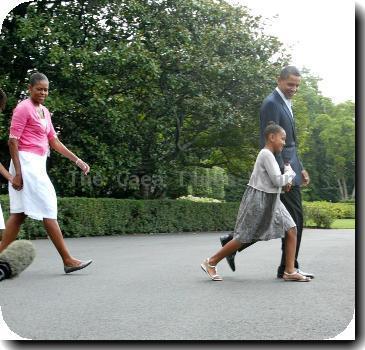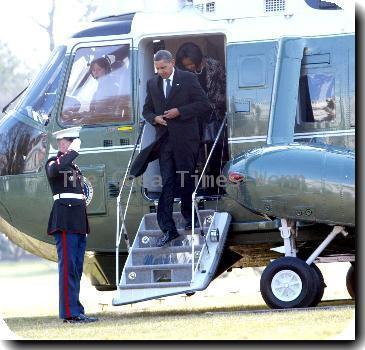US loses first Osprey aircraft in Afghanistan, 4 dead
By Robert H. Reid, APFriday, April 9, 2010
US loses first Osprey in Afghanistan, 4 dead
KABUL — A U.S. Air Force Osprey went down in southeastern Afghanistan, killing three service members and one civilian contractor in the first crash of the costly tilt-rotor aircraft in a combat zone, the U.S. military said.
It’s unclear what caused the crash of the U.S. military’s latest generation transport aircraft — beset for years by cost overruns and design flaws.
A NATO statement Friday said “numerous other service members” were injured when the aircraft crashed late Thursday seven miles (11 kilometers) from Qalat, capital of Zabul province about 200 miles (300 kilometers) southwest of Kabul.
A Taliban spokesman said militants shot down the aircraft, but the insurgents often make exaggerated claims. NATO said the cause was still under investigation. A Pentagon spokesman, Marine Maj. Shawn Turner, said it was the first time that an Osprey, which take off and land like helicopters and cost nearly $70 million each, has crashed during operations in a war zone.
After years of tests and modification, Ospreys went into service in the Air Force and Marine Corps in 2006. Marines started using them in Iraq in late 2007, mostly for transporting troops and supplies in Anbar province. But they were not truly tested in combat there, since the worst of the fighting in Anbar had already passed.
A Marine Osprey flew then-candidate Barack Obama from Iraq to Amman, Jordan, during his visit to the Middle East in July 2008.
The Air Force version is believed to be used in Afghanistan primarily for resupply missions and for transporting special operations troops hunting Taliban and al-Qaida figures.
Aircraft are used extensively in Afghanistan by both NATO and the Afghan government forces to transport and supply troops because the terrain is mountainous and roads are few and primitive.
Losses have been relatively light because unlike Iraqi insurgents, the Taliban lack shoulder-fired missiles and other anti-aircraft weapons. They rely mostly on machine guns and rocket-propelled grenades to fire at aircraft during landings and takeoffs, when they’re most vulnerable.
Nevertheless, one of the heaviest single-day losses of life for allied forces in Afghanistan occurred on June 28, 2005, when 16 U.S. troops died aboard a Special Forces MH-47 Chinook helicopter that was shot down by insurgents.
The Osprey is the U.S. military’s latest-generation transport aircraft, able to travel twice as fast and three times farther than its predecessor, the Vietnam War-era CH-46 Sea Knight. With room for up to 24 passengers, it comes equipped with sophisticated guidance and missile defense systems.
However, the original development program, a $40 billion joint venture of Boeing Co. and Textron Inc.’s Bell Helicopter unit, was beset by delays and plagued by design flaws and other problems.
The Osprey was nearly canceled several times due to cost overruns and a series of fatal crashes and other incidents.
In 2000, 19 Marines were killed when an Osprey crashed during a training exercise in Arizona. Another Osprey crash in December of that year killed four Marines in North Carolina.
Former Vice President Dick Cheney tried to kill the program in 1989 when he was defense secretary, saying the aircraft were unnecessary. But the Marines persuaded Congress to authorize the funds.
Critics say the aircraft is particularly vulnerable to small-arms fire while its engines are shifting from vertical to horizontal flight. Unlike fixed-wing aircraft, the Osprey cannot glide down to an emergency landing in case of a loss of power. Unlike helicopters, its propellers lack the capability to keep rotating on their own even after the engines fail.
But the Osprey’s supporters say the aircraft makes up for vulnerabilities by its speed, saying it can rise quickly to altitudes safe from small-arms fire. The Osprey’s engines roll forward in flight, allowing it to fly faster than a standard helicopter.
Also Friday, a roadside bomb struck a small bus in the western province of Herat, killing three civilians and wounding five, the head of the regional border police, Malam Khan Noorzae, said. Noorzae said a joint NATO-Afghan force had traveled along the same route the day before as part of anti-insurgency operations.
Elsewhere, flights resumed Friday at the U.S. Manas air base in the Central Asian nation of Kyrgyzstan after being halted for two days during an uprising against the government. Manas is a key support center for the international troops in Afghanistan, and President Obama’s national security adviser, Gen. Jim Jones, told reporters Friday it’s too early to know how the change in government affects the base’s future.
Jones also indicated tensions had eased between the administration and Afghan President Hamid Karzai, who has allegated the U.N. and the international community interfered in last year’s fraud-tarnished presidential election in Afghanistan.
“We have gotten through this period,” Jones said.
The Obama administration is counting on Karzai’s support during an upcoming military operation to clear the Taliban from Kandahar, the biggest city in southern Afghanistan and the Islamist movement’s birthplace. Karzai was born in a village near Kandahar and his half brother is a major political figure there.
Associated Press writers Noor Khan in Kandahar, Amir Shah, Christopher Bodeen and Slobodan Lekic in Kabul and Pauline Jelinek in Washington contributed to this story.
Tags: Accidents, Afghanistan, As-afghanistan, Asia, Barack Obama, Central Asia, District Of Columbia, Kabul, Kandahar, Kyrgyzstan, Middle East, Municipal Governments, North America, Transportation, United States





